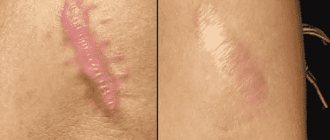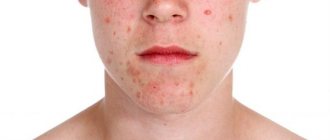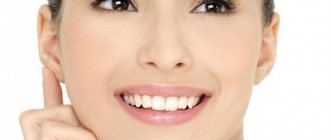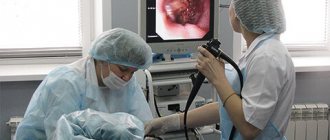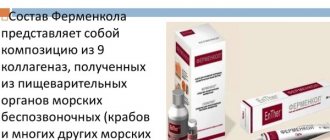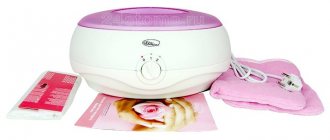The main reason for the appearance of scars on the face is considered to be improper skin care and independent fight against inflammation in the form of acne or acne. Most often, these cosmetic defects occur in young people of adolescence, but can appear in adults. Laser resurfacing of acne can improve the situation, remove pits, and restore smoothness to the skin.
Among other reasons for the development of post-acne scars, experts indicate disturbances in the functioning of the sebaceous glands, hormonal imbalance, thickening of the stratum corneum, and pathologies of the gastrointestinal tract. Laser acne treatment is carried out in the clinic under the supervision of an experienced cosmetologist. Fighting scars and other imperfections on your own can cause complications, which will be much more difficult to get rid of in the future.
To prevent minor defects from developing into a serious pathology, post-acne treatment should begin as early as possible . In this case, the defects can be completely removed, delicately getting rid of the defect. By delaying contacting a cosmetologist, you risk turning small scars into serious growths with a hypertrophied surface. It will be more difficult to cure them, and the therapy itself will require a significant investment.
Post-acne treatment
Scars from acne and post-acne occur due to inflammation and destruction of collagen fibers. At the site of these injuries, rough connective tissue grows. Many scientific works have been written on how to remove acne. The main thing is not to show initiative. It is important to correctly determine the type of scars and select the appropriate treatment.
Doctors distinguish between normotrophic, atrophic, hypertrophic, and keloid scars. Atrophic ones have the appearance of pits-indentations, hypertrophic ones are manifested by protruding growths, and keloid ones are the growth of fibrous tissue that extends beyond the boundaries of the previous wound. There is no universal method for removing acne scars; the technology is selected individually depending on the severity of the defect and other data.
Diagnostics
If signs of acne occur, you should consult a dermatologist or dermatocosmetologist. The doctor will not only evaluate the number of elements, their nature, location and the presence of signs of post-acne, but will also clarify the patient’s dietary habits, whether close relatives have suffered from similar acne on the face, and a number of other points. In general, acne can be diagnosed and its severity determined at the first consultation, since the disease has a specific clinical picture.
But in order to choose the optimal treatment tactics, you need to accurately determine the cause of acne development and assess the general condition of the body. For these purposes, patients are prescribed:
- UAC;
- OAM;
- blood chemistry.
Identifying the cause of acne is extremely important, as it is a chronic disease. Therefore, in the absence of control, it can recur at any time when favorable conditions are created.
When diagnosing post-acne, the nature of facial skin changes, the presence of scars, their shape, depth, localization, and ability to smooth out when the skin is stretched are also assessed.
Laser peeling MicroLaserPeel
Laser peeling MicroLaserPeel is a modern approach to combat skin problems that shows excellent results. This technology works on the principle of polishing. It removes keratinized particles of the epidermis, smoothes it and cleanses it of dead cells. Its effect can be noticed after the first procedure, and it lasts up to 12 months. Its peculiarity is its cold influence. The laser acts at the micron level without damaging the deep structures of the skin, so its effect is painless and safe.
An important stage of the effects of laser cold peeling is stimulation of blood circulation and regeneration. The skin is saturated with oxygen and nutrients. After the completion of the rehabilitation period, the functioning of the sebaceous glands is improved, which prevents the recurrence of inflammatory diseases. After laser peeling of post-acne skin, the protective properties of the skin also increase; the negative impact of the environment will no longer disturb its delicate balance.
Forecast. Prevention
Colloidal scars are the most difficult to remove. Destructive methods are contraindicated here, that is, such defects cannot be excised, scraped, burned, or sanded. Otherwise, even more serious consequences may arise. Therefore, it is important not to bring the post-acne problem to such a state.
The main rule is to treat acne promptly and competently to prevent complications.
If after acne you have a stagnant spot
, your task is to prevent it from developing into a scar. To do this, you need to care for your skin in a special way.
- Do not subject the stain to rough physical, chemical, or mechanical stress
so as not to damage it. Minimum 3 months. - Don't stay in the sun for long periods of time.
- Moisturize your skin.
If you prefer pharmaceutical products, choose those that contain zinc hyaluronate (Curiosin, Regetsin, etc.).If you are one of the fans of natural cosmetics, pay attention to Beauty365 products.
To moisturize during the day and cleanse the skin, choose light and soft products - hydrolates (water distillates). It is best to stop at Beauty365 mint hydrolate and Beauty365 sage hydrolate - they “specialize” in oily and problematic skin.
Enhanced hydration and regeneration will be provided by Beauty365 squalane (sugar cane) and Beauty365 sasanqua camellia oil. Natural vegetable oils are the best way to soften rough skin. Camellia sasanqua will also help whiten stains.
- If you need to relieve inflammation, use a special remedy.
For example, ichthyol ointment (20%) is suitable. Within two weeks of use, the redness will subside.
If scars have already begun to form
, then you can lubricate them with ointment containing silicone dioxide or polysiloxane. It will create a film that will reduce fibroblast activity and collagen production.
Laser facial resurfacing
If you need a more intense effect - with deep scars, it is better to use a fractional CO2 laser. It not only destroys dead cells, but also affects the dermal structures, activates the synthesis of collagen and elastin, and destroys defective fibers.
As a result, laser resurfacing of the face for post-acne helps to rejuvenate the skin and improve complexion after the first procedure. With its help you can remove even deep scars. It should be noted that the rehabilitation period of CO2 laser resurfacing lasts longer than that of cold peeling, because its effect affects the deeper layers of the skin. Therefore, you should resort to it more thoughtfully, and it is better to seek advice from a cosmetologist.
Treatment of post-acne scars is possible using the following methods:
- Removal of formations with a laser - elimination of fibrous compaction with a beam directed at it. Scanning irregularities, evaporating surface defects with damaged structure. The technique is atraumatic for healthy tissue. Laser removal of post-acne easily copes with the deficiency and stimulates the synthesis of collagen fibers.
- Peels on a chemical basis - fruit acids, salicylic acid, TCA. The skin receives a precisely calculated impact, after which its regenerative abilities are activated, which leads to rejuvenation and improvement of skin condition.
- Dermabrasion is the application of a fine crystalline mixture of aluminum oxide to the damaged area. Creating a vacuum with mechanical grinding of the scar.
- Injection methods using collagen help remove post-acne in the form of atrophic scars by introducing a filler. The treatment allows you to even out the skin texture for up to 6 months through the introduction of filler; subsequently, the procedure should be repeated.
The aesthetic cosmetology clinic “Faces” uses 2 laser resurfacing procedures for post-acne , the most effective and safe:
- Fractional CO2 laser - performed on Italian SmartXide DOT equipment. This laser is recognized by experts as the most advanced on the cosmetology market. It has no analogues. Treats wrinkles, scars, stretch marks. It evens out the tone well, removes dead skin particles, and stimulates skin renewal through the synthesis of new collagen fibers. The effect after the procedure increases over six months.
- Laser resurfacing of post-acne face Halo Sciton is an American technology used to improve and rejuvenate the skin. Gives 2 types of waves (ablative and non-ablative), which guarantees minimal trauma and quick recovery. Evens out the texture of the epidermis, improves turgor, and increases elasticity. The skin becomes radiant, filled with health and beauty.
Clinical manifestations
The main types of post-acne scars (Fig. 2 and 3):
- Hypertrophic.
- Keloids.
- Atrophic:
- chipped (icepick scars) - 60–70% of cases;
- rounded (rolling scars) - 20–30% of cases;
- rectangular (boxcar scars) - 15–25% of cases.
Atrophic scars after acne occur on average 3 times more often than hypertrophic and keloid scars.
Severity of post-acne scars:
- Macular - flat hyper- or hypopigmented (dark or light) lesions that do not change the skin texture.
- Mild - small atrophic or hypertrophic scars, invisible from a distance of more than 0.5 meters from a person. It is enough to simply hide them with decorative cosmetics or a beard (for men).
- Moderate - atrophic or hypertrophic scars of moderate severity, visible from a distance of more than 0.5 meters. They are not so easy to hide with makeup or natural facial hair, but you can straighten them with your fingers, stretching the skin in different directions.
- Severe - pronounced atrophic or hypertrophic scars, clearly visible from a distance of more than 0.5 meters. They cannot be straightened with your fingers when the skin is stretched.
In Russia, specialists from the Research Institute of Surgery named after. A.V. Vishnevsky developed a modified Vancouver scale . It can also be used in the analysis of post-acne scars ( Table 1 ).
Table 1. Modified Vancouver Scar Scale
| Points | Description |
| By color | |
| 0 | Normally pigmented (color of surrounding healthy skin) |
| 1 | Hyper- or hypopigmented (brighter or paler) |
| 2 | Various shades of red (immature scars) |
| In relation to the level of surrounding healthy skin | |
| 0 | At the level |
| 1 | Below level |
| 2 | Above level |
| By relief and surface quality | |
| 0 | Flat |
| 1 | Lumpy, uneven |
| 2 | With hyperkeratosis and ulcerations |
| By shape | |
| 0 | Scar cord or fold (the length of the scar is greater than its width) |
| 1 | Scar mass (the length and width of the scar correspond to each other) |
About half of all acne scars are of clinical significance, i.e. disrupt the structure and/or function of a specific area of the skin. By disfiguring the face, they negatively affect the emotional state of patients, reducing their self-esteem, causing psychological disorders and social maladjustment. Severe acne scars are considered a risk factor for suicide.
Rice. 1. Hypertrophic and keloid post-acne scars (www.acne.org, www.healthjade.com)
- Hypertrophic scars - appear within a month after healing, are located strictly at the site of the acne rash, are usually painless, lighten over time and can regress.
- Keloid scars - appear 3 or more months after healing, extend beyond the boundaries of the acne rash, cause pain and itching, darken over time and can continue to grow.
| Hypertrophic | Keloid |
Rice. 2. Atrophic acne scars and their relative depth (Jacob CI, et al. J Am Acad Dermatol 2001; 45: 109–117. Hession MT, et al. JCAD 2015; 8: 50–58)
- Icepick scars - small in size (less than 2 mm), with clearly defined edges, cone-shaped (expand upward), deep (extend to the dermis and subcutaneous fat).
- Rolling scars - long (more than 4–5 mm), superficial, extending to the dermis, giving the surface of the skin a wavy appearance.
- Rectangular (boxcar scars) - medium in size (1.5–4.0 mm), the edges are smooth and steep (never tapering downwards), round or oval in shape, can be superficial or deep.
Features and benefits of laser treatment
New generation equipment allows you to painlessly remove damaged skin without causing harm to healthy tissues. The impact is carried out only at the level of the upper layers, where obsolete cells are replaced by updated cellular structures.
Laser treatment for acne is suitable for different skin types and can have a multifunctional effect: remove stretch marks, correct scars, rejuvenate, eliminate hyperpigmentation.
The operating mode is adjusted individually for each patient. The first effect of post-acne laser treatment is noticeable after the first session, and subsequently the result only improves and becomes more pronounced.
Care after the post-acne resurfacing procedure
Laser acne removal is performed in the clinic; after the procedure, it is important to follow the doctor’s recommendations. Since the skin is damaged, it should not be touched with hands to avoid infection. Once crusts have formed, do not peel them off yourself . The intervention sites can be covered with a sterile bandage.
Treatment includes the use of antibacterial, anti-burn, moisturizing and cell regeneration-stimulating drugs. It is better to wash your face using a spray bottle, filling a container with thermal water. If pain occurs, painkillers can be used. Protection from the sun and exposure to ultraviolet radiation is required until the even color of the epidermis is completely restored.
